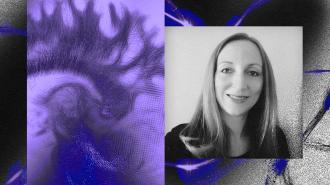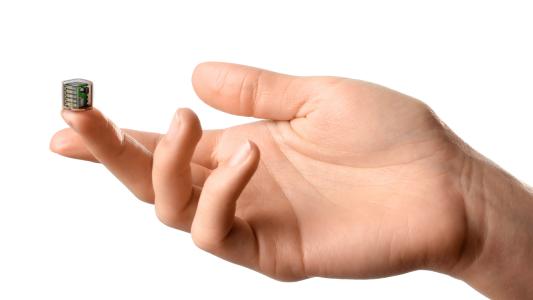What image does the number 693 produce in your mind? For Katie Kermode, who holds four world records in memory championships, the answer is a theatrical showman. She has a mental image handy for all numbers between 1 and 999. The number 522, for instance, makes her visualize red lentils “spilling everywhere.” And 711 conjures a cat.
These images aren’t arbitrarily selected. If you’ve ever wondered how it’s humanly possible for someone to recite 70,030 digits of pi from memory, as Suresh Kumar Sharma did in 2015, the answer is that they’re almost certainly using a mnemonic technique — a strategy that helps you remember and retrieve long lists of information by simplifying it into more relatable or easily visualized concepts.
To memorize numbers, for example, Kermode uses the Ben System (a variation of the widely used Major System), in which each digit represents a particular consonant or vowel sound. These form words when combined: 7 (kuh) 1 (ah) 1 (tuh) gives you “cat.”
Why convert numbers into mental images? The brain has a much easier time recalling images over words, a phenomenon known as the picture superiority effect. “Numbers are just hard to remember naturally because they’re very abstract,” Kermode said. So, if you tried to memorize and recall the first 100 digits of pi, “You might see a row of digits, but I’m seeing ‘tree,’ ‘cat,’ whatever. [I wouldn’t] remember the order without some sort of technique.”
That’s for digits, however. Years before learning her first memory technique (a grade school mnemonic trick to remember the names of the planets), Kermode had a knack for memorization. At three years old, her parents found that she could easily recall the names of football players and the clubs they played for, and later, she was able to easily recall license plates, phone numbers, and the names of kids in school.
In 2008, Kermode competed in her first memory competition, landing a world record for memorizing 84 unfamiliar names and faces in five minutes. (She later topped that with a new world record of 105.) Today, with numerous records and awards under her belt, Kermode is one of the world’s top competitors for names-and-faces and word competitions.
But, perhaps surprisingly, she doesn’t use mnemonic techniques for every memory task. “Especially for names, there’s literally no technique that I use,” Kermode said. “I try not to even think about it.”
But that’s not to say that performing wild feats of memory is only possible for those who are naturally gifted. Kermode said many memory athletes never felt they had a strong memory, and some competitors might have a hard time remembering faces and names yet do very well in other competitions, like numbers. Ultimately, anybody can get to a high level in memory sports, Kermode said.
“You have to train, but also ability helps. I think it’s like with any sport: It’s a mixture of the two.”
So where should you start if you want to improve your memory abilities? The answer is likely with the strategy used by virtually every memory athlete whom Kermode knows: the method of loci.
The method of loci
Also called the “memory palace” technique, the method of loci was developed by the ancient Greek polymath Simonides of Ceos, who narrowly avoided being crushed to death by a building collapse during a dinner party in the 5th century BC. Simonides came up with the technique after finding he was able to identify the dead by thinking about where each person was seated at the banquet. Spatial location, he realized, is a powerful memory aid.
In 2020, Big Think interviewed the English illusionist Derren Brown about how he uses the technique in his performances to count cards and do other tricks. In essence, the method involves creating a mental map of a familiar place (your house or your neighborhood) and then pairing the information you want to remember with specific locations within that place.
But Kermode, like many memory athletes, uses a modified version of the method. When she wants to remember a long list of digits — like the 1,080 numbers she memorized over 30 minutes in a 2017 competition, for example — she breaks the numbers into groups of three. Using the phonetic-based Ben System, she converts these three-digit numbers into words and corresponding images: a cat, lentils, a showman. She then visualizes walking through a familiar route within her mental map (she often uses her home) and “places” two images in each predetermined spot along this imaginary stroll.
“I actually do something a little bit different [from] most people, which is [that] I’ve got a fixed person in each location,” Kermode said. “So, in my driveway it’s this guy called Ben, who’s a memory competitor. In my hallway, it’s my nephew… It just helps me link the objects to something rather than just putting them in a location.”
Why add people to the mix?
“It’s much more meaningful to have a person to link them to,” Kermode said. “It’s like if you find out a fact about your friend — like a certain friend owns a snake — you know, you’ll remember it. ‘Oh, they own a snake? That’s kind of odd.’ You won’t have to visualize the snake in their house. You’ll just remember it.”
Kermode said other competitors use different variations. For example, some people use the scenes of a movie instead of a familiar area. “That’s something that’s not quite the method of loci but it essentially is.” Other memory athletes might not use any version of the Major System to convert the numbers they want to remember into images, or they’ll arbitrarily assign images to certain numbers. “I find that strange, but everybody’s got different brains, different ways of coming up with these strategies.”
Cognition and memory sports
When Kermode encounters the number 711, an image of a cat appears in her mind — the result of training through the Ben System. But Kermode said words and numbers can also spark visualizations and other perceptions completely organically, without any intention or prior training. This seems to be a product of synesthesia, the perceptual phenomenon that blends the senses in unusual ways, such as “seeing colors” when hearing music.
“Numbers, to me, have a natural color,” Kermode said.
The number 2, for example, presents itself as blue. Meanwhile, certain names have different “textures”: The name Penelope comes off as “rounded” while Ethan is “harsh” and “sounds like scratching nails on a fence.” Kermode said she’s only met one or two memory athletes with synesthesia, but noted that “people talk a lot about it” in the memory sports world.
In recent decades, researchers have been investigating synesthesia and its relationship to memory. Some studies (though not all) suggest that synesthetes have better memory abilities than the general population, at least in certain memory tasks. Why? It’s not completely clear, but one explanation may be that synesthetes naturally form the kind of vivid, multisensory mnemonic associations that others have to cultivate to enhance memory.
Beyond questions over synesthesia or inherent abilities, Kermode noted that there’s a big push in the memory sports world to emphasize that “anybody can do this.” And she agrees, mentioning that she knows memory athletes who have built up their abilities “from scratch.” A 2017 study published in Neuron supports this idea, noting that high-level memory abilities “do not seem to be associated with extraordinary brain anatomy or general cognitive superiority, but they are acquired through deliberate training in mnemonic strategies.”
“[Especially for] memorizing numbers — there are techniques you can use,” Kermode said. “It’s not really something you need natural ability for.”
But like any sport, Kermode believes natural advantage is not a factor to be ignored, in part because she hopes researchers will continue to study the mechanisms behind memory.
“Because I was able to get a world record on my first competition, it’s never really been a doubt in my mind that I must have some sort of natural ability,” she said. “Of course, I don’t like to go around saying, ‘Hey, I’ve got some natural ability!’ But it’s just a fact.”
Kermode, who works as a software developer in England and created the memorization and recall software used at IAM World Memory Championships and other competitions, hopes to compete in more face-to-face memory competitions soon, noting that the pandemic had halted many in-person contests. In the meantime, she’s working on a four-digit system that pairs specific images with all numbers up to 10,000.
As for what people often get wrong or might not know about memory sports?
“I think one misconception that people have is they think it’s really boring — sitting looking at a row of digits, for instance,” Kermode said. “But what perhaps people don’t realize is we’re turning them into objects and people, and we’re making these really cool stories… When I’m going through my locations, they’re usually places I’ve been on holiday or vacation. I’m thinking of these really amazing places and sort of making things happen in those locations and it’s very creative. It’s actually quite fun.”
This article was originally published on our sister site, Big Think.






